Packing for a trip can be a daunting task, especially when space is limited. Knowing How To Fold Clothes For Travel efficiently is crucial for fitting everything you need into your luggage while minimizing wrinkles. Whether you’re using a backpack, suitcase, or duffel bag, mastering different folding techniques will help you travel smarter.
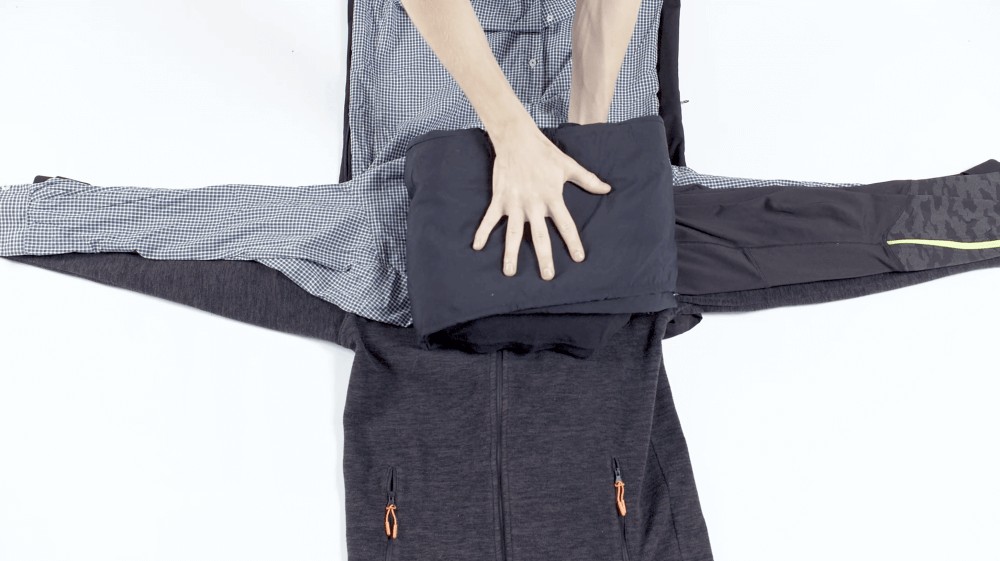 Suitcase with folded clothes, demonstrating efficient packing
Suitcase with folded clothes, demonstrating efficient packing
Popular Clothing Folding Techniques for Travel
Several packing techniques can help you optimize space and reduce wrinkles. Each method has its pros and cons, depending on the type of clothes you’re packing and your luggage. Let’s explore some of the most effective options.
Rolling Clothes for Travel
Rolling is a fantastic technique when saving space is your top priority. This method involves tightly rolling your garments and placing them in your suitcase or backpack as compact cylinders.
✅ Suitable for: Backpacks and Suitcases
👍 Advantages of Rolling:
- Space-Saving: Ideal for packing numerous items, such as t-shirts.
- Versatile: Works well with backpacks and packing cubes to keep things organized.
👎 Disadvantages of Rolling:
- Wrinkle Potential: More delicate fabrics may crease more easily.
How to Roll Specific Clothing Items:
-
Jacket:
- Fold the sleeves inward.
- Turn the bottom inside out.
- Fold the jacket into thirds.
- Flip it over and tightly roll.
- Secure the roll with the folded part.
-
Trousers:
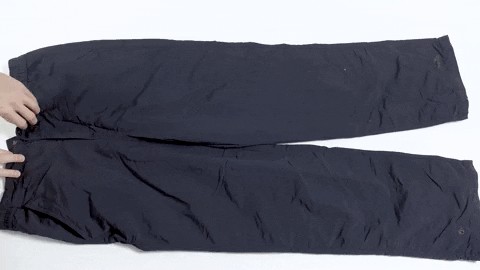 GIF demonstrating how to roll trousers for packing
GIF demonstrating how to roll trousers for packing- Turn the top inside out.
- Align the trouser legs.
- Flip the trousers over and roll tightly.
- Secure the roll with the folded part.
-
T-shirt:
- Turn the bottom inside out.
- Fold it into thirds.
- Flip the t-shirt over and roll tightly.
- Secure the roll with the folded part.
-
Shirt:
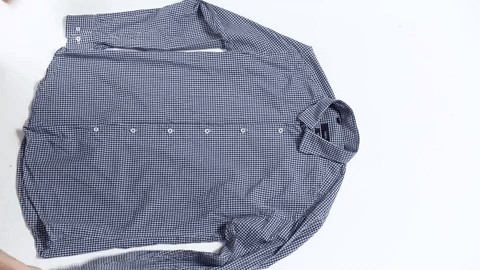 GIF demonstrating how to roll a shirt for packing
GIF demonstrating how to roll a shirt for packing- Fold the sleeves inward.
- Turn the bottom inside out.
- Fold the shirt into thirds.
- Flip it over and roll tightly.
- Secure the roll with the folded part.
-
Towel:
- Slightly roll the top edge.
- Fold both sides inward.
- Flip the towel over and roll tightly.
- Secure the roll with the folded part.
Bundling Clothes for Travel
If you’re packing delicate garments that wrinkle easily, the bundling technique might be your best bet. This involves layering clothes on top of each other and wrapping them into a compact bundle.
✅ Suitable for: Suitcases
👍 Advantages of Bundling:
- Wrinkle Reduction: Helps to minimize creases on dresses and shirts.
- Space-Saving: Efficient use of space in your suitcase.
- Adaptable: Works well with clothes of various sizes; smaller items can be wrapped within larger pieces like jackets or hoodies.
👎 Disadvantages of Bundling:
- Time-Consuming: Requires more time and careful planning.
- Inconvenient Access: Retrieving specific items can be cumbersome.
How to Bundle Clothes:
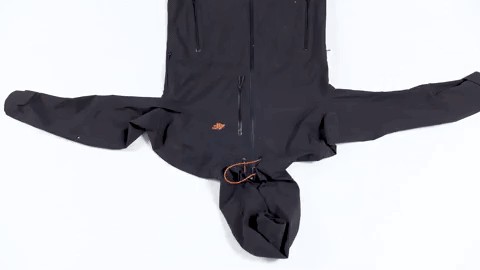 GIF demonstrating the clothes bundling technique
GIF demonstrating the clothes bundling technique
General Packing Tips:
- Start with heavier items like jackets or coats as the base layer.
- Add long-sleeved clothes like shirts and sweaters, layering sleeves across each other.
- Place trousers alongside the sleeves, folding them in half for a better fit.
- Pack t-shirts and shorts alternately.
- Position underwear or accessories in the center, using a bag to help prevent creases.
- Roll the layers tightly, wrapping each garment successively until the entire bundle is formed.
Packing Order:
- Outerwear
- Long Sleeves
- Trousers
- T-Shirts
- Shorts
- Underwear
Traditional Folding Method
The traditional folding method involves folding clothes as you would when storing them in a wardrobe. This is a common method but not always the most space-efficient.
✅ Suitable for: Suitcases
👍 Advantages of Folding:
- Easy Unpacking: If you plan to unpack immediately upon arrival, this method keeps clothes neat and organized.
- Outfit Planning: Convenient for pre-planning daily outfits by pairing items together.
- Uniform Items: Ideal when packing similar items, like for a summer trip, creating uniform rectangles.
👎 Disadvantages of Folding:
- Space Inefficiency: Doesn’t save much space, particularly with varying garment sizes.
- Wrinkle Prone: Can lead to creases in shirts, dresses, and trousers.
How to Fold Specific Clothing Items:
-
Shirt:
- Fasten all buttons.
- Fold the sleeves and then fold them again in the middle.
- Fold both sides of the shirt.
- Fold the bottom part so you can fold the whole shirt three times in total
- Fold the shirt in half
-
Trousers:
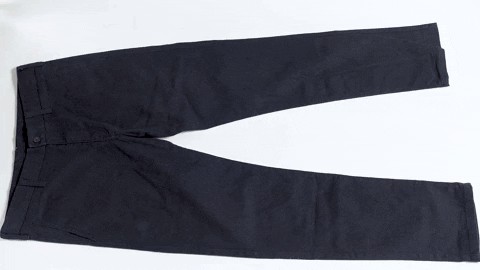 GIF demonstrating how to fold trousers
GIF demonstrating how to fold trousers- Lay the trousers evenly.
- Put the trouser legs on each other
- Fold the trousers in half
- Fold them again – that’s it
Vertical Folding (Back-to-Front)
This method involves folding clothes into rectangles and arranging them vertically in your luggage, allowing you to see each item at a glance.
✅ Suitable for: Suitcases
👍 Advantages of Vertical Folding:
- Visibility: Easy to see all your packed clothes without disturbing the arrangement.
- Space-Saving: Efficient, especially when packing a lot of t-shirts.
👎 Disadvantages of Vertical Folding:
- Wrinkle Risk: Similar to traditional folding, creases can still occur.
Vacuum Packing
For bulky items like sweaters, vacuum packing can save significant space. This technique involves using special bags to remove air from your luggage, compressing items and reducing volume.
✅ Suitable for: Suitcases
👍 Advantages of Vacuum Packing:
- Maximum Space Savings: Dramatically reduces the space needed for bulky items.
👎 Disadvantages of Vacuum Packing:
- Cost: Requires purchasing vacuum bags.
- Time Consuming: Adds extra steps to the packing process.
Choosing the Right Technique: A Summary
Understanding how to fold clothes for travel is essential for efficient packing. Experiment with these methods to determine which works best for you, considering the type of clothing you’re packing and your luggage style. By mastering these techniques, you can maximize space, minimize wrinkles, and enjoy a stress-free travel experience.